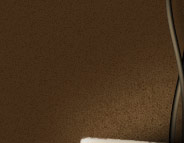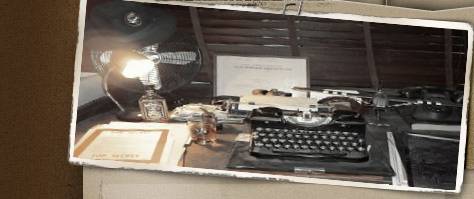|

Battle Relic: Steel
impact absorber ("bumper") of
British "C" Type ("tube")
parachute container, World War
Two
Introduction: On a Dutch
auction website we purchased a
relic from the famous Battle of
Arnhem in September 1944. Up for
sale was a steel impact absorber
from a container apparently
dropped to (re-)supply the
surrounded airborne troops of
the British 1st Airborne
Division fighting around Arnhem.
We made a fairly low first offer
and possibly due to the poor
state the object was in, we were
able to close the deal. Because
we learned that the seller would
also visit the next edition of
the gigantic military show in Ciney, Belgium, we agreed to
make the exchange there. For a
small sum of money, we became
the owner of a piece of military
history.
|
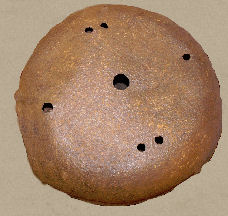
|
|
Item Description
The seller, a Dutchman from one
of the northern provinces of the
Netherlands, explained us that he
had found the British drop container
impact absorber when he was using
his metal detector near Oosterbeek,
west of Arnhem. Unfortunately we
have no more details about the
location where this item was
discovered.
It is a rusted steel hollow disc
consisting of two bowl-shaped metal
parts welded together.
Both "bowls" have stamped holes in
them. It has small holes to allow
the disc to be bolted to the plywood
bottom of a "C" Type tube parachute
drop container.
It also features large holes to
allow the disc to collapse under the
impact of the container upon
landing; much like the action of
deformable zones in modern day
automobiles. Our item shows dents in
the half without the holes for
bolts; hence the outside part which
hits the ground first. This makes it
likely that this impact absorber was
in fact dropped
and did what it was
designed for. |
|
(click to enlarge)
       |
Story
Because we have only a few clues
to go on ("found near Oosterbeek",
"dents in the part that hits ground
first") there are many possible
stories behind this item; none of
which can be proven today.
The container may have been dropped
on the first day, D-Day, of
Operation Market Garden on Sunday
September 17th, 1944 and carried
into what would later be known as
the perimeter around the Divisional
Headquarters in the Hotel
"Hartenstein" in Oosterbeek.
It may also have been delivered over
the perimeter during subsequent
resupply flights by Royal Air Force
despatchers. |
 |
|
(click to enlarge)

Packing, loading and
use after drop of a "Welbike"
collapsible motor scooter
Note impact absorber on "C"- type
container |
|
Other examples of "C" Type
container impact absorbers
There are several "C" Type
containers on display in the
Airborne Museum in Oosterbeek, The
Netherlands in the Hotel "Hartenstein"'the
former HQ of the 1st Airborne
Division.
After the museumís recent
refurbishment some of these
containers are shown in different
settings than before. We have taken
photographs during our various
visits to the museum, both before
and after the re-opening in 2009.
These images show the drop
containers' details from various
angles and points of view.
There are for instance, white tube
containers for dropping medical
supplies.
These pictures show the impact
absorber, the butterfly nuts inside
the disc and the plywood lid on
which it is bolted to the container. |
|
(click to enlarge)
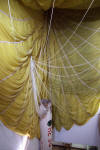  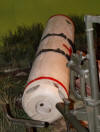     |
|
On display is also a black container
with a shovel attached to the
outside. These are more likely to
have been used to supply resistance
fighters in Nazi-occupied countries.
The shovelís purpose was to bury the
container and the parachute on which
it was suspended. This practice is
not necessary in a full scale
airborne operation with large units
jumping into action. |
(click to enlarge)
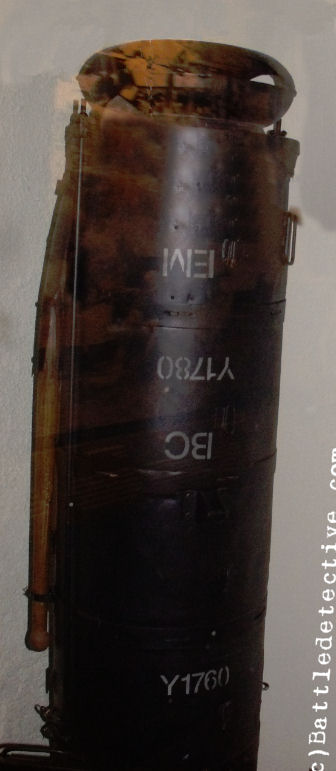
 |
The following first two images show
American air crew preparing "C" type
containers to be dropped with
supplies.
This third photo was taken in
occupied Holland and shows
containers in what may be a stable.
The items stacked against the
containers are 2.36-Inch M6A1
"Bazooka" rockets and the cardboard tubes in
which this ammunition is packed.
|
|
(click to enlarge)
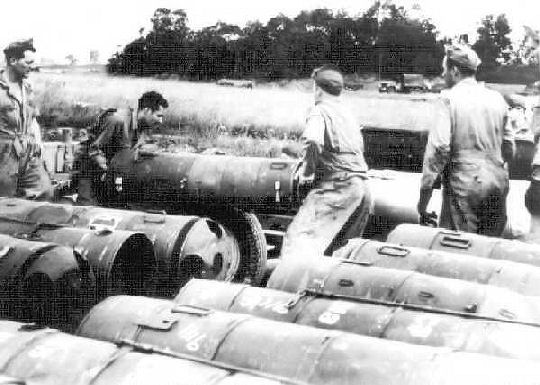
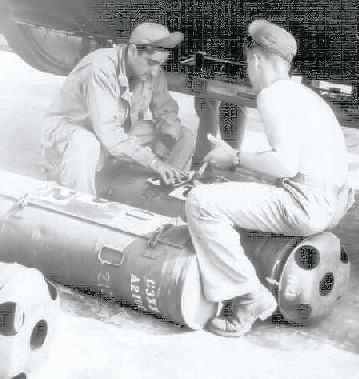
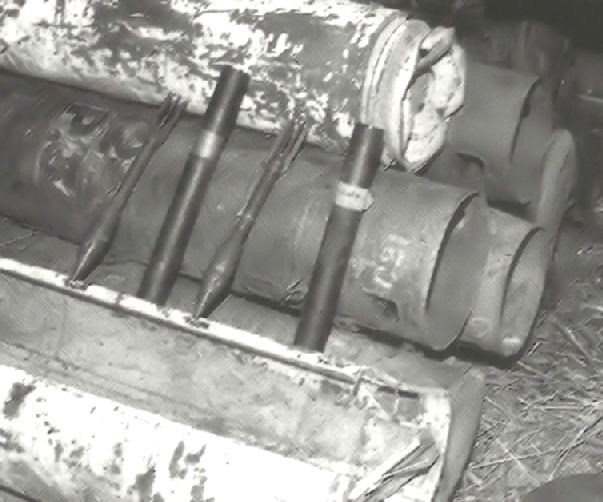 |
Also of interest is the Airborne
Monument in the Dutch town of
Heelsum.
It is entirely made up of British
equipment left behind after the
Battle of Arnhem.
The "arch"
consists of "C" type tube containers
welded together. Paratrooper helmets
adorn the structure.
|
|
(click to enlarge)
_small.JPG) _small.JPG) _small.JPG) _small.JPG) _small.JPG)  |
Dents
We noticed that neither the
'bumpers' in the Oosterbeek Airborne
Museum, nor the ones welded onto the
Heelsum Airborne Monuments show
signs of damage, denting or
crumbling.
The item described here, does.
From the fact that the 'bumper'
shows a noticeable dent on one
quarter of the outer disc, we
theorize that it must
have carried a relatively heavy load
and that it either hit the
ground there first (perhaps due to
an oscillating motion under its
parachute canopy) or that it struck
a protruding hard object, such as a
curb, roof edge, rock, etcetera.
|
CONCLUSION
A few months ago we were contacted
by a member of the production team
of a Canadian TV show named "War
Junk". That is a term with more than
one meaning. Junk may refer to a person
with an addiction. It can also mean discarded
material. In light of our airborne
container bumper, we prefer the
latter. Although we have a profound
interest in combat and battle
related topics, an obsession with
the phenomenon would be undesirable.
The principle idea of the TV show
would be to study artifacts related
to combat and to explain the meaning
of the
items. In this case, we can
tell quite well what this rusty,
old, beat-up disc was used for.
This
remnant of the Battle of Arnhem is a
true battle relic.
|
EXHIBITS
The
Liberty Park Museum in Overloon in
The Netherlands has an excellent
example of an intact "C" Type Drop
Container showing the impact bumper
featured here: |
|
(click to enlarge)
_small.jpg)
_small.jpg) _small.jpg) |
On display in the
Airborne
Museum are two more "C" type
containers. One gives an impression
of what material might have been dropped to
supply resistance groups in occupied
Holland.
The other is one is a
container that, like the impact
absorber featured in this Battle
Relic, was dug up years after the
war. A grim reminder of the evil of
war.
|
|
(click to enlarge)
.jpg)
.jpg) |
 |
|
Back to Battlerelics
 |
|
|
